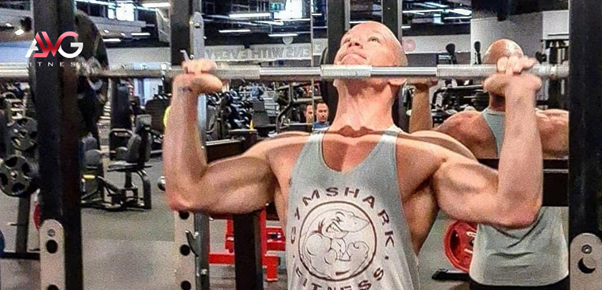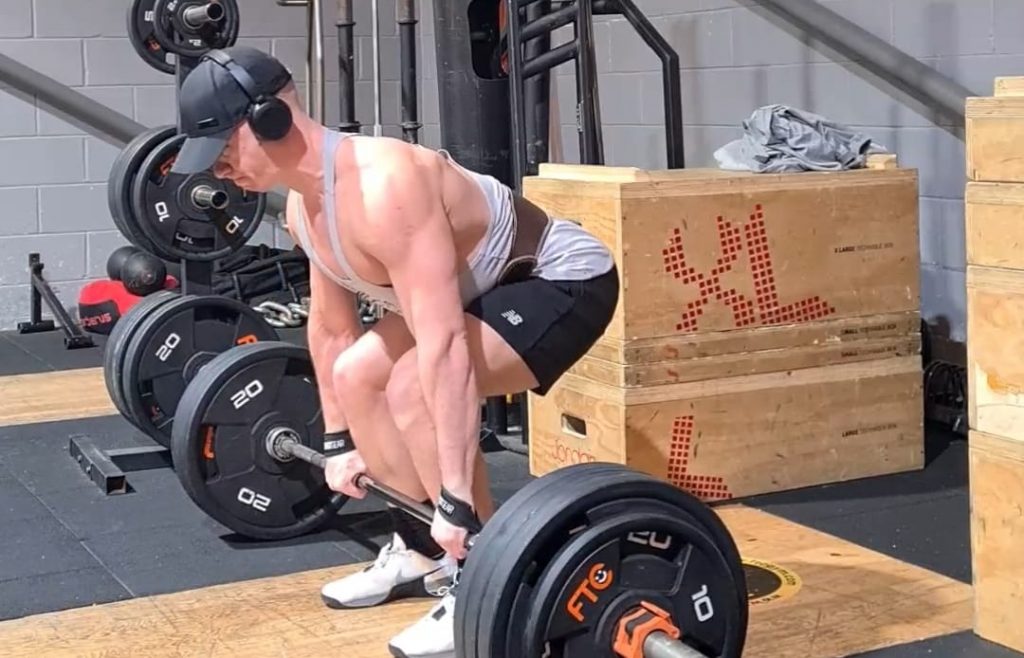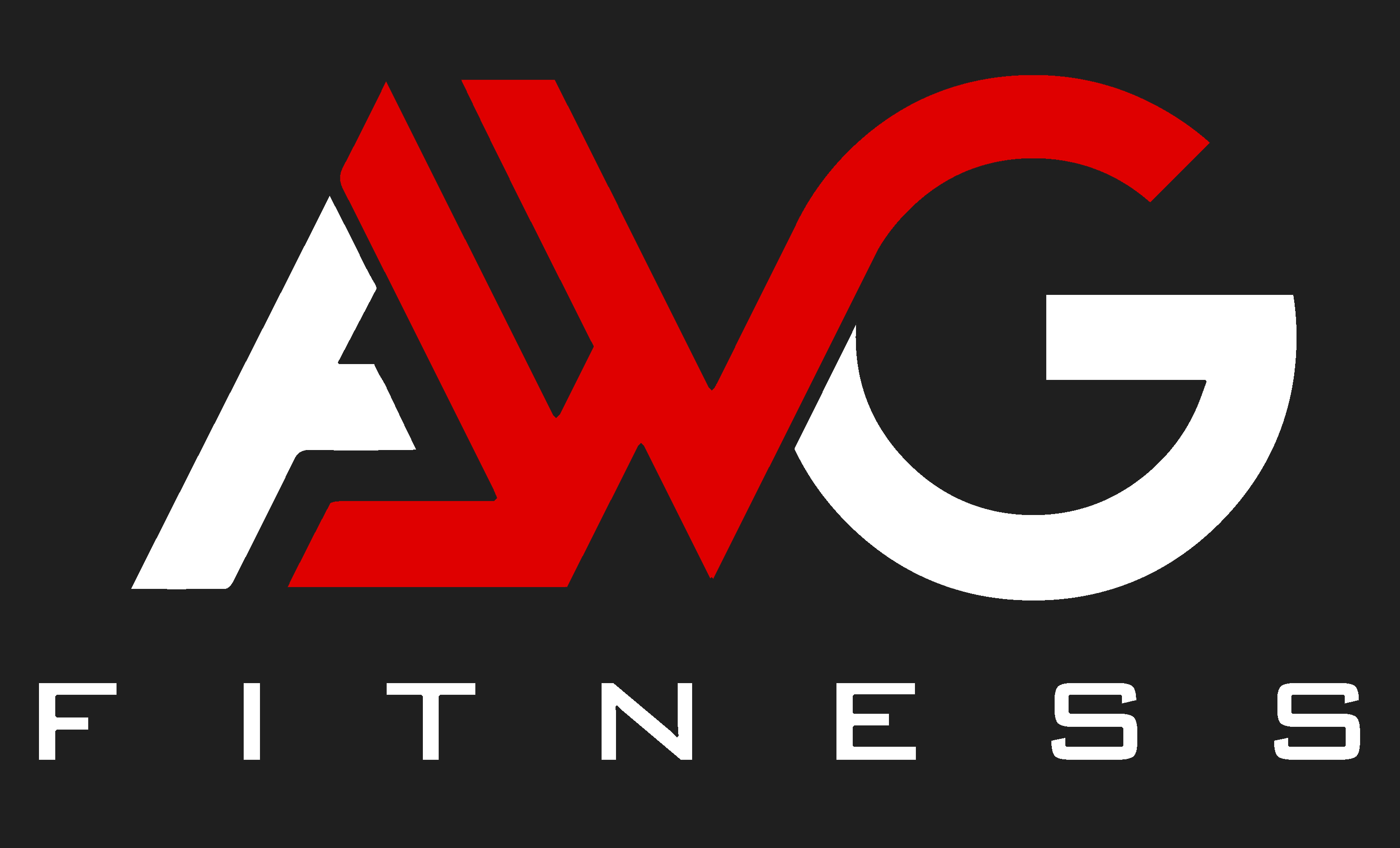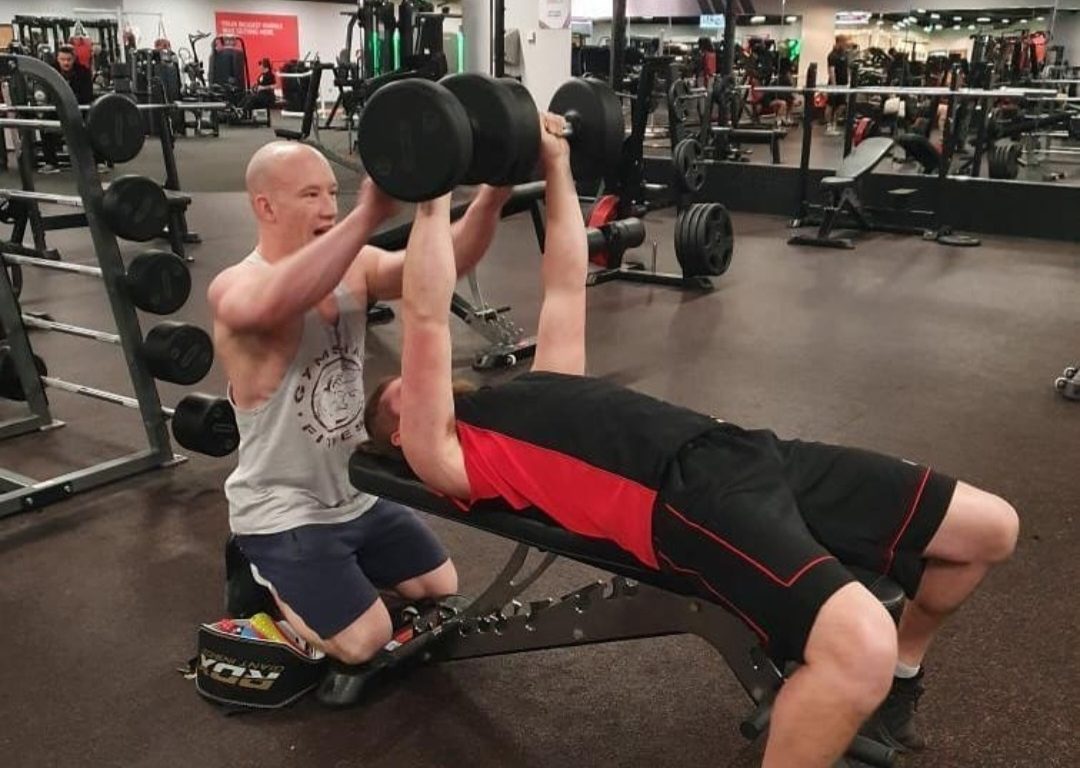I remember the first time I stepped into a gym to lift weights. I was filled with nervous excitement but mostly overwhelming confusion. Racks of dumbbells, machines with stacks of plates, bars of every variety – it was all so perplexing! Where does a beginner even start in the world of strength training?
If the weight room similarly mystifies you, have no fear! I have put together this ultimate guide to weightlifting for beginners like us. I will walk you through all the basics to start an effective yet safe strength training journey.
Why Lift Weights? The Benefits Are Endless

Many people have the misconception that weightlifting is just for bodybuilders and athletes. But the truth is that strength training offers incredible full-body benefits no matter your age, gender, or fitness level!
After consulting the experts and doing extensive research, I have found that lifting weights can:
- Build more substantial muscles and improve bone density
- Boost metabolism and support sustainable weight loss
- Reduce risk for injury and joint issues
- Support better posture and balance
- Increase self-confidence and body image
- Reduce stress and release feel-good endorphins
And those are just a few of the many perks! It is always possible to start lifting. Research shows that strength training becomes even more critical as we age to preserve muscle mass and keep our bodies functioning correctly.
Setting Strength Goals
Going into weightlifting without clear goals is one of the biggest mistakes I see beginners make. Failing to define your goal will make it much harder to track your progress and tell if your training plan is working. Before getting into the nitty gritty details of weight lifting, take some time to outline your objectives clearly.
Your goals might include:
- Losing body fat
- Building lean muscle
- Improving athletic performance
- Recovering from an injury or surgery
- Supporting bone health
- Gaining self-confidence
Setting short-term and long-term goals will help you measure success on your lifting journey. And remember – goals can shift and evolve! Check-in with yourself occasionally to assess if your training aligns with your current fitness priorities.
Getting Started: Weightlifting as a Beginner

If the idea of walking up to a loaded barbell gives you paralysis by analysis, don’t worry! When I first started strength training, I found that working with a personal trainer helped reduce the perplexity substantially. Trainers can teach proper lifting forms, provide customized programming, and ensure you safely progress toward your goals.
But if working one-on-one is outside your budget, many gyms offer introductory strength training classes. These workshops cover weight room basics in a small group environment, allowing you to learn techniques under expert guidance before hitting the weights independently.
And for those ready to dive in solo, read on! I will walk through all the key steps so you can start lifting confidently as a beginner.
Choose Where to Train
Joining a full-service gym gives access to top-of-the-line equipment and group fitness classes. But with budget home gyms and streaming workouts gaining popularity, at-home training is also a great option. Consider what is most convenient and motivating for you when picking your primary training location. And remember – nothing is stopping you from lifting weights at home and in the gym!
Invest in Key Gear
Luckily, you do not need to buy out the entire weight room to start lifting. As a beginner, focus on the basics:
- Dumbbells
- Resistance bands
- Exercise ball
- Core sliders
- Yoga mat for floor work
I recommend starting with lighter weights (5-15 lbs) until you build foundational strength and technique. Water bottles, towels, athletic shoes, and comfortable workout clothing are also helpful additions to your lifting wardrobe!
Learn Proper Lifting Form

This one cannot be overstated – proper form is vital to avoid injury and work the intended muscle groups. Common mistakes like lifting too fast, straining your neck forward, and rounding your back can lead to extra soreness and orthopaedic issues.
Instead, focus on engaging your core, keeping your chest lifted and shoulder blades pinched together. Move slowly and with control, without locking knees or elbows. Keeping weights directly above wrists and ankles also helps maintain good alignment.
If any exercise causes sharp pain or discomfort, stop immediately. Reducing weight, elevating injured areas, and icing can provide relief, but consult a doctor if problems persist. Learning what feels right versus wrong in your body will save you from months of recovery!
Master the Mind-Muscle Connection
The “mind-muscle connection” refers to focusing on using and contracting the muscles you intend to target. As a beginner, this level of awareness takes some practice. But consciously engaging your muscles makes a massive difference in your results!
To improve mind-muscle connection during any lift, visualize the movement pattern and focus on squeezing the working muscle. For example, during bicep curls, picture your biceps surging upwards as you lift while tensing them maximally. Removing distractions, slowing your speed, and flexing muscles between sets can also sharpen your focus.
Additionally, many trainers recommend starting with bodyweight moves like squats, lunges, and push-ups. Lifting your body helps tune into proper muscle activation before adding external load. As you build this neural connection early on, your mind and muscles will start working synergistically every workout.
Stick to Compound Lifts
As a beginner, compound exercises that work simultaneously for multiple large muscle groups are your new best friends. Swapping isolation moves for compound lifts allows you to lift heavier weights, amplifies calorie burn, and triggers anabolic muscle-building hormones.
My top compound exercises for beginners include:
- Squats
- Deadlifts
- Bench presses
- Overhead presses
- Bent over rows
Lifting heavier weights puts increased tension on muscles to spur adaptation. But don’t sacrifice strict form to move more weight! Starting too serious too soon is asking for injury. Be patient, working incrementally in weight once you develop coordination in each movement pattern.
Add Cardio and Core for Maximum Results

Combine your new lifting regimen with metabolism-boosting cardio and core training 2-3 days per week for rapid results. Elevated heart rate burns extra calories and strengthens your cardiovascular system. Dedicated core days target the vital muscles that support your spine and stabilize the entire body.
Some of my favorite supplemental workouts include:
- HIIT intervals
- Steady-state runs
- Uphill walking
- Cycling
- Core circuits
- Yoga flows
Varying high-intensity interval training, steady-state endurance exercise, and core moves slash workout boredom so you never miss scheduled gym sessions! Plus, combining diverse training modalities maximizes the different fitness adaptations your body experiences.
The 3 Most Important Things for Beginners

I get it – reading guides like this one still leaves your head spinning about where to start. So, if you take away nothing else, ingrain these most vital pointers:
Perfect your form above all else.
Creating the habit of moving correctly through each lift prevents long-term issues. Film yourself, take notes, ask for feedback, and compare your positioning to demos.
Progress gradually
Pushing progress too aggressively by lifting too heavy or advancing too rapidly elevates injury risk substantially. Be patient and focus on slow, linear progression over time.
Listen to your body.
Learning body awareness is a skill that takes practice, but tuning into acute pain, chronic soreness, and fatigue lets you modulate intensity. Your body sends signals – it’s up to you to listen!
Designing Your Beginner Weightlifting Program
If you asked me as a newbie, “What should my workout split look like?” I would have stared back blankly. Split refers to organizing your training schedule by muscle groups and training days. With countless options, figuring out a beginner program can feel utterly perplexing!
Luckily, the experts at NASM recommend starting with a full-body workout plan 2-3 days per week. Alternating between upper body push-pull movements and integrating lower body and core exercises allows your whole body to recover completely before the next session.
Here is a great beginner full-body split:
Workout A
- Squat
- Bench Press
- Bent Over Row
Workout B
- Sumo Deadlift
- Overhead Press
- Split Squat
Supplement each session with additional arm, shoulder, and core movements depending on your goals. Consider training only 2-3 times during the first 1-2 weeks to ease into the routine gently before increasing frequency. If you want to train 3 times in 1 week I would use workouts A, B, then A again.
You can progress to more advanced splits that isolate muscle groups as you advance. But developing overall fitness with a total body approach sets an excellent foundation!
Nutrition Fundamentals for Beginners

All the squatting and deadlifting only optimize progress by paying equal attention to your nutrition! Finding the right dietary strategy amplifies the effects of your training. To simplify eating for beginners, focus on the basics:
- Drink ample water
- Eat enough protein
- Increase veggies
- Reduce added sugar
- Monitor portion sizes
Consuming around 1 gram of protein per pound of body weight helps repair and rebuild muscle after tough training sessions. Aim for this intake to spread throughout the day from food sources like red meat, chicken, fish, Greek yogurt, cottage cheese, and protein shakes.
Veggies provide vital nutrients for recovery without excess calories while limiting sugar curbs fat storage. And be mindful of portion distortion – use smaller plates and weigh food to prevent overeating.
If you want to geek out on macros or try specialized diets, save those for later! Sticking with straightforward healthy habits makes the most significant difference in starting.
The Key to Progress: Create New Bursts of Excitement
Reflecting on my journey into weightlifting, I remember the most progress occurring when I created fresh bursts of excitement around training. Your beginner gains will be thrilling as you put up new personal records weekly for the first few months!
But the speed of rapid improvement inevitably slows. The early morning alarm clocks sound less appealing. Excuses to skip workouts creep in. You might even miss a workout. This spiral can completely stall your momentum.
Here are my top tips to re-spark your lifting passion:
- Train with a partner
- Hire an online coach
- Take a Workshop
- Switch up your playlist
- Sign up for a competition
- Buy new gym gear
- Learn a new type of lifting
Shaking things up pushes you outside your comfort zone so you return to basics with refreshed motivation. Having an accountability partner or coach provides external pressure to show up even on hard days. Competitions add deadline urgency, while workout apparel you love boosts confidence.
Exploring new modalities like Olympic lifts, Strongman, or powerlifting gives you exciting skill goals! Staying open, curious, and intentional during plateaus is critical to continuity.
Trust the Process: Have Patience Seeing Results
I would acknowledge how eagerly I expected visible changes early on in my journey. Every morning, I would flex my biceps, seeking signs of new muscular contours. It took me a few months to realize that dramatic visual changes happen slowly over consistent, long-term work.
Remind yourself frequently that progress requires patience and perseverance. Take monthly photos to track subtle differences objectively without getting fixated on rapid, overnight changes. Keeping reasonable expectations helps avoid premature frustration, so you stick with lifting long enough to witness the fundamental transformation.
Some outward changes, like increased muscle definition, can take six months to emerge. More importantly, the non-aesthetic results like joint stability, cardiovascular endurance, and self-confidence develop much quicker with regular training. Appreciate the mental and physical rewards as fuel to continue putting in the work!
Overcoming Fear and Intimidation

I want to explicitly acknowledge that entering testosterone-filled weight rooms can feel intimidating as a beginner. Most of us grapple with some anxiety walking into male-dominated gyms or workouts with scary-looking equipment.
First, know that environments filled only with chiselled athletes are generally beginner-unfriendly. Seek facilities welcoming to those starting fitness journeys – they DO exist! Having at least some women and average physiques around normalizes the experience.
Remember that everyone had a first day once – the grunting powerlifters, the elderly lady doing bicep curls, and even the podium competitors! We all started clueless. Other gym goers are usually far more focused on their workouts than judging someone new.
If you still need more time to feel totally out of your element, bring a knowledgeable friend or hire a trainer to accompany you initially. Having an advocate to demonstrate the proper use of machines and reinforce that you belong goes a mile. No question is stupid – good gyms will be excited to share wisdom if approached respectfully.
And a pro tip: watch others! Observing challenging-looking moves being done successfully shows they are possible to learn. Allow more advanced lifters to inspire rather than intimidate.
Indeed, though, the ONLY comparison that matters is to yourself. Consider every PR a victory, no matter how small it seems externally. Progress begins with one rep at a time!
Preventing and Managing Injuries
I will not pretend that injuries never happen in strength training – they most definitely do. However, applying innovative preventative strategies minimizes risk substantially. Handling tweaks appropriately when they manifest prevents minor issues from becoming major.
My top tips for reducing lifting injuries:
- Warm up effectively
- Strengthen core and glutes
- Stretch major muscle groups
- Stay hydrated
- Avoid overtraining
- Use lifting belts
- Perfect form before upping weight
Building foundational strength in the core and hips provides stability during compound lifts. Stretching keeps muscles supple under heavy loads. Allowing actual rest days while varying training stimuli facilitates recovery.
But if you do experience unusual pain during or after exercising:
- Stop activity immediately
- Ice area for 20 mins/hour
- Take OTC anti-inflammatories
- See a physical therapist
- Modify problematic movements
Poor form and overuse commonly cause discomfort in the shoulder, knee, elbow, and lower back. Proactively seek professional help to correct muscle imbalances or movement dysfunction early! Learning to lift correctly will serve your body for decades.
Conclusion
And there you have it – all my hardest-won lessons for starting on the weightlifting journey! The key is tuning out the complexity paralysis and simply beginning. Perfection is the enemy of good, especially as a beginner still learning the ropes.
Trust that showing up consistently while slowly adding challenges positions you for success. Strength training elicits incredible rewards when given time to blossom into a habit. So, take your time with the perplexity of optimizing every detail early on!
You WILL mess up form occasionally. You WILL lift too heavy and get injured once (maybe twice). You WILL skip workouts and have to repeat failed reps in the next session. All of those situations are OK – they are part of the process!


